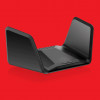Say Goodbye To Your BIOS: Hello, UEFI!
The days of the good ol’ BIOS are numbered. The Unified Extensible Firmware Interface (UEFI) will introduce a more powerful solution able to better cope with the demands of today’s diverse hardware. In a nutshell, UEFI is an interface that takes care of handing over the pre-boot environment to the operating system. We took a quick look at UEFI and found some imminent issues.
You may have already heard about UEFI (or EFI, which was the initial approach). Intel initiated EFI in 2003 with the Itanium’s IA64 architecture under the title Boot Initiative. The concept was handed over to the Unified EFI Forum, which managed and promoted the new standard for the entire industry. AMD, AMI, Apple, Dell, HP, IBM, Insyde, Intel, Lenovo, Microsoft, and Phoenix are the leading members today. A BIOS relies on the x86 architecture’s 16-bit real mode, but UEFI introduces full hardware independence and interfaces split into boot and runtime services. These aim at high standardization while introducing enough flexibility for manufacturers to differentiate their products.









































































